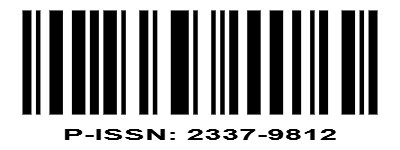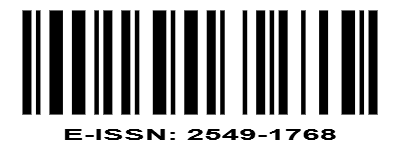THE EFFECTS OF VISUAL MAPPING AND SCIENCE-RELATED ATTITUDES ON STUDENTS’ CRITICAL THINKING AND PROBLEM SOLVING SKILLS
DOI:
https://doi.org/10.22373/biotik.v8i2.8060Keywords:
Visual Mapping, Science-Related Attitudes, Critical Thinking Skills, Problem Solving SkillsAbstract
The aims of this study were to find out: (1) the effects of visual mapping on students’ critical thinking skills, (2) the effects of science-related attitudes on students’ critical thinking skills, (3) the interactions between visual mapping and science-related attitudes on students’ critical thinking skills, (4) the effects of visual mapping on students’ problem solving skills, (5) the effects of science-related attitudes on students’ problem solving skills, and (6) the interactions between visual mapping and science-related attitudes on students’ problem solving skills. This study was conducted at MAN 1 Tanjung Pura, totally 141 students. It was a quasi-experimental technique by using a pretest-posttest experimental group with 4x2 factorial design. The technique of data analysis was processed by the Two-Way ANOVA and followed by Duncan’s Multiple Range Test. The results showed that: (1) there were the significant effects of visual mapping on students’ critical thinking skills (F=87.082; P=0.000), (2) there were the significant effects of science-related attitudes on students’ critical thinking skills (F=2.493; P=0.040), (3) there were the interactions between visual mapping and science-related attitudes on students’ critical thinking skills (F=2.037; P=0.000), (4) there were the significant effects of visual mapping on students’ problem solving skills (F=94.214; P=0.000), (5) there were the significant effects of science-related attitudes on students’ problem solving skills (F=3.397; P=0.031), and (6) there were the interactions between visual mapping and science-related attitudes on students’ problem solving skills (F=2.195; P=0.000).Downloads
References
Akay, O.S. 2012. The Effect of Concept Maps on The Academic Success and Attitudes of 11th Graders while Teaching Urinary System. International Online Journal of Primary Education, 1(1): 62-76.
Buzan, T., B. Buzan. 1993. The Mind Map Book: How to Use Radiant Thinking to Maximize Your Brain’s Untapped Potential. New York: Plume.
Davies, W.M. 2010. Concept Mapping, Mind Mapping and Argument Mapping: What are the Differences and Do They Matter? Available from: http://www.tlu.fbe. unimelb.edu.au/teaching_staff/seminar_series/documents/Sem-1CMMMAM.
Finken., R.H. Ennis. 1993. Illinois Critical Thinking Essay Test. Illinois Critical Thinking Project. Department of Educational Policy Studies University of Illinois.
Fiol, C.M., A.S. Huff. 1992. Maps for Managers: Where are we? Where do we go from here? Journal of Management Studies, 29(3): 267–285.
Fraser, B.J. 1978. Test of Science-Related Attitudes (TOSRA) Handbook. The Australian Council for Educational Research Limited, Radford House, Frederick Street, Hawthorn, Victoria 3122.
Garofalo, J., F. Lester. 1985. Metacognition, Cognitive Monitoring, and Mathematical Performance. Journal for Research in Mathematics Education, 16(3): 163-176.
Jonassen, D., M. Tessmer. 1996. An Outcomes-based Taxonomy for the Design, Evaluation, and Research on Instructional Systems. Training Research Journal, 8(2): 67-84.
Kinchin, I.M. 2001. If concept mapping is so helpful to learning biology, why aren’t we all doing it? International Journal of Science Education, 23(12): 1257-1269.
National Academy of Sciences. 1996. National Science Education Standards, National Academy Press: Washington, DC.
Nicolaidou, M., G. Philippou. 2003. Attitude Towards Mathematics, Self-efficacy and Achievement in Problem Solving. Proceedings of the 3rd Conference of the European Society for Research in Mathematics Education.
Novak, J.D. 1998. Learning, Creating, and Using Knowledge: Concept Maps as Facilitative Tools in Schools and Corporations, (1st eds.). New Jersey: Lawrence Erlbaum Associates, Inc.
Pell, T., T. Jarvis. 2001. Developing Attitude to Science Scales for Use with Children of Ages from Five to Eleven Years. International Journal in Science Education, 23(8): 847-862.
Peng, C.N. 2004. Successful Problem-Based Learning for Primary and Secondary Classrooms. Singapore: Federal Publications.
Ramsden, P. 1998. Learning to Teach in Higher Education. London: Routledge.
Schwartz, N.H. 1988. Cognitive Processing Characteristics of Maps: Implications for Instruction. Educational and Psychological Research, 8(1): 93-101.
Stoyanov, S., P. Kommers. 2006. WWW-intensive Concept Mapping for Metacognition in Solving Ill-structured Problems, International Journal of Continuing Engineering Education and Lifelong Learning, 16(3): 297–316.
van Gelder, T.J. 2013. Argument Mapping. In Encyclopedia of the Mind, edited by H. Pashler. Thousand Oaks, CA: Sage.
Vekiri, I. 2002. What is the Value of Graphical Displays in Learning? Educational Psychology Review, 14(3): 261-312.
Downloads
Published
Issue
Section
License
Authors who publish with BIOTIK: Jurnal Ilmiah Biologi Teknologi dan Kependidikan agree to the following terms:
- Authors retain copyright and grant the journal right of first publication with the work simultaneously licensed under a Creative Commons Attribution License that allows others to share the work with an acknowledgement of the work's authorship and initial publication in this journal.
- Authors are able to enter into separate, additional contractual arrangements for the non-exclusive distribution of the journal's published version of the work (e.g., post it to an institutional repository or publish it in a book), with an acknowledgement of its initial publication in this journal.
- Authors are permitted and encouraged to post their work online (e.g., in institutional repositories or on their website) prior to and during the submission process, as it can lead to productive exchanges, as well as earlier and greater citation of published work.











